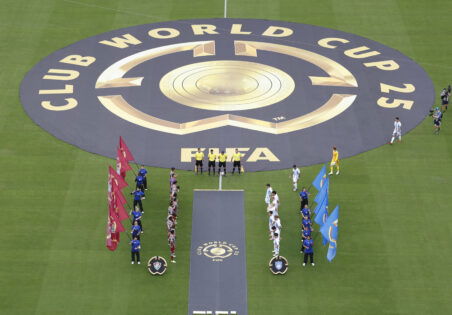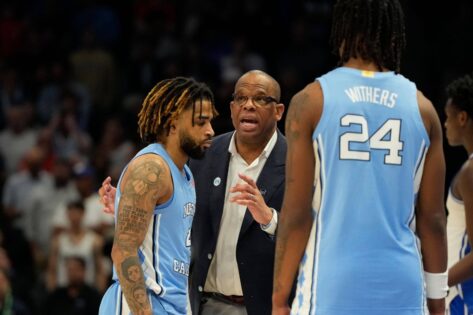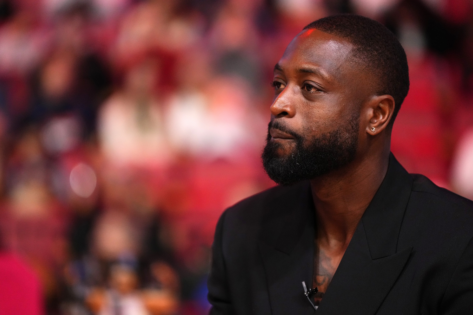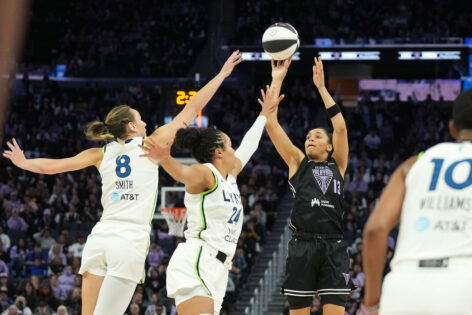Fun fact: Did you know that back in 2018, a Gallup poll revealed that only about 7% of people in the United States considered soccer their favorite sport? Simply hidden in plain sight, at least compared to other sports like football, which held a 37% popularity share, and basketball, with 11%. Fast forward to today, 2025 — if your next question is whether anything has changed over all these years, well, you tell us: does a massive surge of 35%, approximately 115 million people, sound about right?
We hope it does. And if you’re wondering what changed among the Americans when looking at the beautiful game, well, a lot transpired. Basically, it’s not just about watching local baseball on cable anymore, with today’s viewership that includes not just fresh, young Gen Z blood, or trying to fit in millennials, but even the Hispanic community, who have always been keeping up with soccer as long as history remembers.
No wonder, keeping that in mind, UK-based broadcaster DAZN has decided to take a major step to cater to this very Latin American community, at least a report from Sportico says so. Having successfully broadcast the recently concluded 2025 FIFA Club World Cup in a remarkable $1 billion tie-up, the Access Industries-led organization is hoping to emulate a similar success for the upcoming 2026 FIFA World Cup, with a special focus on the Hispanic viewers as well.
Soccer: FIFA Club World Cup 2025-Final-Chelsea FC at Paris Saint-Germain Jul 13, 2025 East Rutherford, New Jersey, USA Paris Saint-Germain defender Achraf Hakimi 2 reacts with Chelsea FC midfielder Moises Caicedo 25 during the final of the 2025 FIFA Club World Cup at MetLife Stadium. East Rutherford MetLife Stadium New Jersey USA, EDITORIAL USE ONLY PUBLICATIONxINxGERxSUIxAUTxONLY Copyright: xVincentxCarchiettax 20250713_mcd_cb6_28
Having streamed 63 matches for free in both Spanish and English, and providing commentary in a total of 17 languages, DAZN managed to accumulate over 12.2 billion minutes of action on their platform across “tens of millions of unique devices,” the company said. And that was just from a revamped version of the Club World Cup featuring 32 teams. So, you can imagine how much DAZN is expecting from the expanded 2026 World Cup, which will feature 48 teams and three different co-hosts.
At least DAZN U.S. president and global chief revenue officer Walker Jacobs has an estimate of what exactly they foresee from the prestigious international tournament. “We also have some ambitious plans around original programming,” said Jacobs in an interview with Sportico. “We want to really sort of lean in and double down on the momentum from the Club World Cup and from FIFA.”
Ahead of the upcoming World Cup, DAZN’s core focus is on strengthening its ties with the millions of new viewers it has gained worldwide. This, in turn, will help the company increase its value in the eyes of prospective rightsholders looking to expand internationally. For instance, the NHL recently partnered with DAZN to make NHL.TV is available in nearly 200 countries. In 2024, DAZN reported having over 300 million regular global viewers.
That explains why FIFA President Gianni Infantino claimed that the 2025 Club World Cup generated a profit of $2 billion, averaging $31 million per game. Yep, that much, even though there were clear instances where filling stadiums proved a challenge. And with the World Cup also expected to deliver significant profits, it has only pushed DAZN to think long-term for the sake of soccer in America.
Soccer is having a resurgence in the States!
Sadly, in a country where the beautiful game still struggles against other dominant sports, one of the challenges in trying to elevate it will be securing broadcasting rights. Thankfully, the new soccer rights will largely remain behind DAZN’s paywall. Even so, the company is open to creating opportunities to grow its audience, starting with leveraging its social reach and potentially offering more free streams.
Consider that the Club World Cup saw DAZN’s soccer-focused social footprint grow by 66% over the summer, at least, according to Walker Jacobs. No wonder he describes DAZN as a platform that is opportunistic and rarely confines itself to rigid boundaries. And it’s true: top-tier sports rights have become increasingly difficult to secure in the U.S., with the world’s biggest tech companies — from Apple and Amazon to Google’s YouTube — now regular contenders.
December 3, 2022, Doha, Qatar: DOHA, QATAR – DECEMBER 3: United States fans pose for a photo before a FIFA World Cup, WM, Weltmeisterschaft, Fussball Qatar 2022 Round of 16 match between Netherlands and USMNT at Khalifa International Stadium on December 3, 2022 in Doha, Qatar. Doha Qatar – ZUMAt139 20221203_zaa_t139_018 Copyright: xBradxSmith/IsixPhotosx
Then again, DAZN is not only focused on expanding around the world, but it also intends to stay in the American game. “We have a lot of discipline around making sure that what we’re buying is strategic and aligns with our vision, and that the economics makes sense and that it fits in with the overall consumer value proposition of DAZN,” Jacobs said.
“But continuing to grow the English language and continuing to add to our programming—both on the original and studio show side, as well as social originals, as well as live rights—is an area where you’re going to see a lot of continued interest on our part,” added the DAZN U.S. chief.
Talk about going the extra mile — take the Club World Cup, for example, where DAZN introduced unique features such as a virtual reality viewing mode for Meta Quest devices. In fact, Jacobs also insisted that the platform is ready to serve as a streaming partner for any kind of traditional media outlets, who, unfortunately, lack such capabilities or even co-bidding on upcoming rights.
So, overall, a lot is in store for the 2026 FIFA World Cup. Let’s see how DAZN’s rallying efforts can spark a wave of soccer enthusiasm among Americans.
The post $1 Billion Club World Cup Success Leads DAZN to Make Unique Soccer Move in U.S. appeared first on EssentiallySports.



